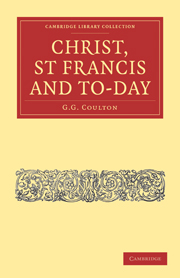Summary
THE Roman and Anglo-catholic doctrine of church, ministry and succession is sometimes supported by an ingenious analogy. It is admitted that the early documents are painfully scanty and obscure. But, after a few generations, we get a clear sight of the Catholic church (that is, of a strong majority of professing Christians), bound together in a fairly definite organization and moving in a fairly definite direction; which direction, on the whole, was fairly consistently maintained until the Reformation. Therefore the upholders of the catholic theory argue: ‘If we see a train emerging from a tunnel in a certain direction, and keeping that direction pretty consistently, at any rate until a revolutionary change occurs, then we may infer with some certainty that the train's unseen course through the tunnel was consistent with its visible course followed in the open air.’ To those familiar with Alpine railways, the argument will scarcely carry complete conviction even as applied literally to a railway train. As applied to ancient and medieval history, most scholars would probably condemn it, even a priori, as involving anachronistic ideas; that regularity which seems normal to the modern man is really rather exceptional in the past, even under the Roman Empire. But we are not left to a priori judgment; for we have here a very clear analogy in actual religious history, in the one movement which, by common consent, resembles most nearly the ferment of the apostolic age.
- Type
- Chapter
- Information
- Christ, St Francis and To-day , pp. 80 - 96Publisher: Cambridge University PressPrint publication year: 2010First published in: 1919



